How to keep a hybrid Dakar racer cool
- PostedPublished 25 February 2022
Carefully honed cooling systems help new Audi RS Q e-tron concept thrive in challenging desert conditions
The new Audi RS Q e-tron, an advanced range-extending motorsports concept, has comprehensively demonstrated its capabilities in this year’s Dakar Rally.
Despite just a reported year of development, and a plethora of complex hardware, all three of the entered RS Q e-trons completed the world’s most challenging off-road rally – with one, driven by Mattias Ekstrom and Emil Bergkvist, finishing ninth out of the 186 race-completing competitors.
Because the car was intended to demonstrate Audi’s electric e-tron technology, and push its limits, its front and rear axles are powered by motor-generator units (MGUs) fed by a high-voltage battery system.
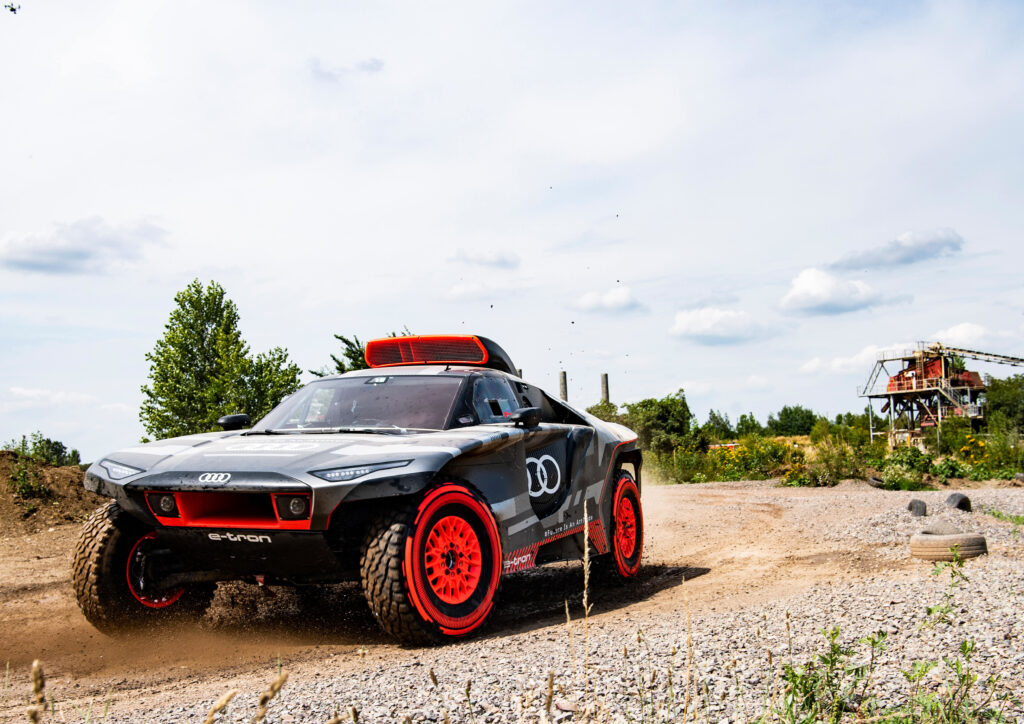
Each is sourced from the current e-tron FE07 Formula E car, and only lightly modified for rallying, and the maximum system output of the Audi’s drivetrain is reputed to be 500kW.
Due to the impossibility of charging the vehicle during such an arduous, remote, fast and long-distance race, however, the RS Q e-tron was outfitted with a 200kW turbocharged petrol engine coupled to an MGU to charge the drive battery.
The RS Q e-tron’s success in the desert was in part due to its cooling systems, which had to ensure the best possible heat dissipation, and maintain several circuits at the optimum temperature, in stressful conditions.
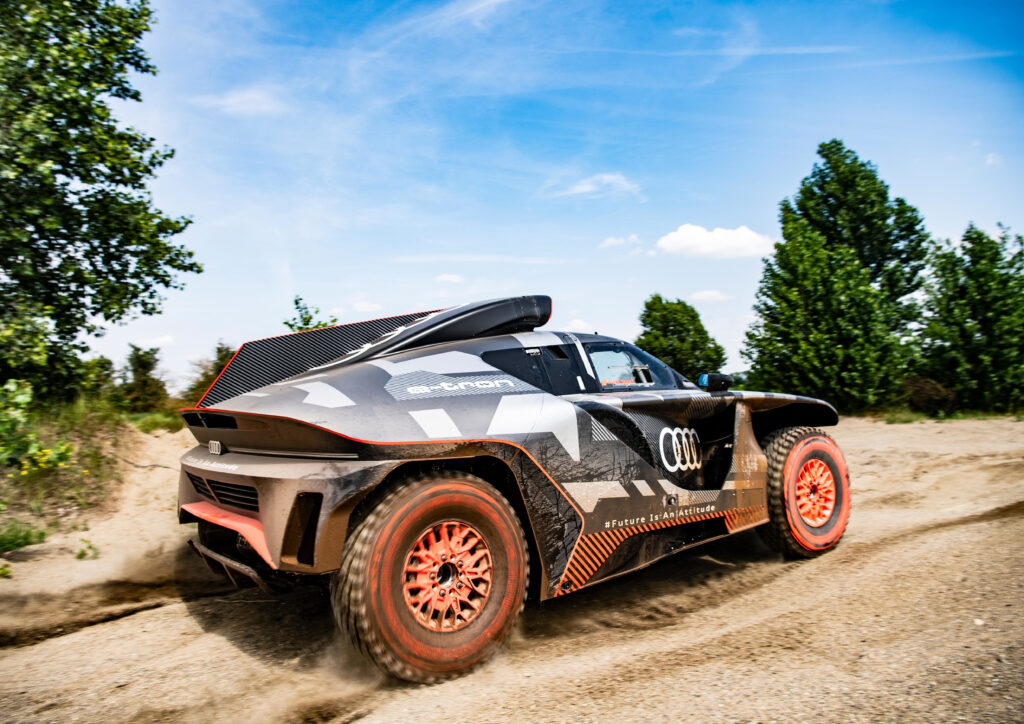
“Audi has never contested the Dakar Rally before,” said Sebastian Fröber, cooling system engineer for the RS Q e-tron. “The first question we asked ourselves was: how do we get the heat out of the car?”
“We started with CFD simulations for the aerodynamics of the overall vehicle. Then we designed the individual cooling systems.”
At the core of the RS Q e-tron is a 50kWh battery, weighing some 370kg, the temperature of which is regulated by a low-temperature circuit utilising a radiator in the nose of the Audi.
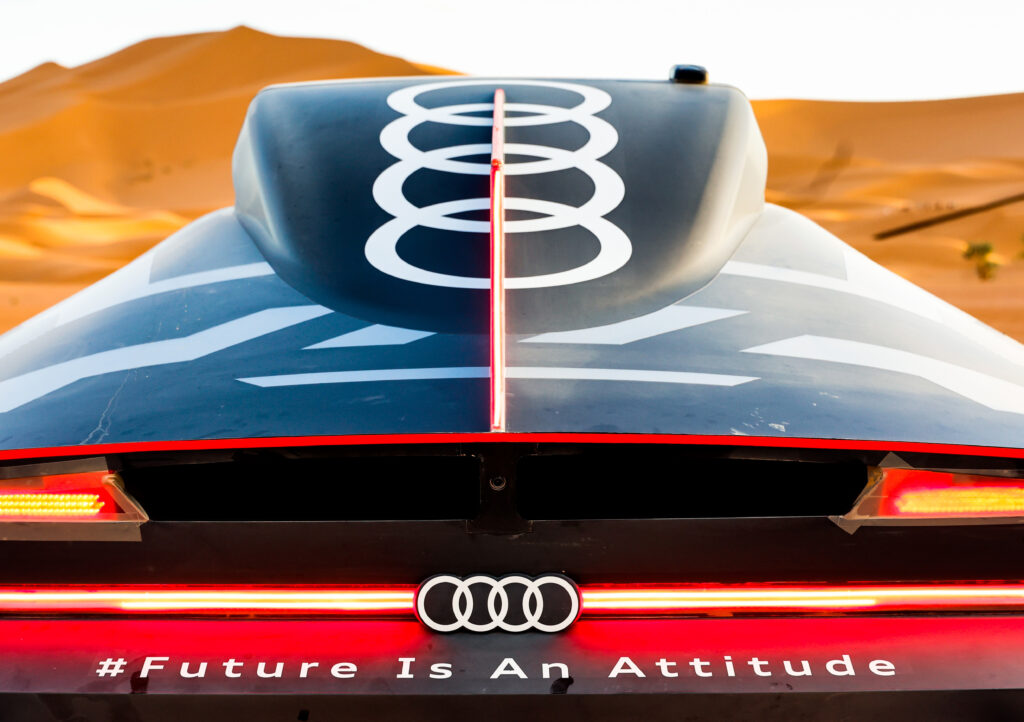
Non-conductive Novec coolant, produced by 3M and designed for immersed electronics, is used to ensure efficient and safe thermal transfer.
To keep the engine and axles’ MGUs at the optimum temperature, a dedicated low-temperature coolant loop dissipates heat via another radiator at the front of the vehicle.
These low-temperature circuits proved challenging to optimise, because the 40°C desert air offers minimal cooling for the 60°C circuits – whereas the hotter high-temperature circuits still receive a significant cooling effect.
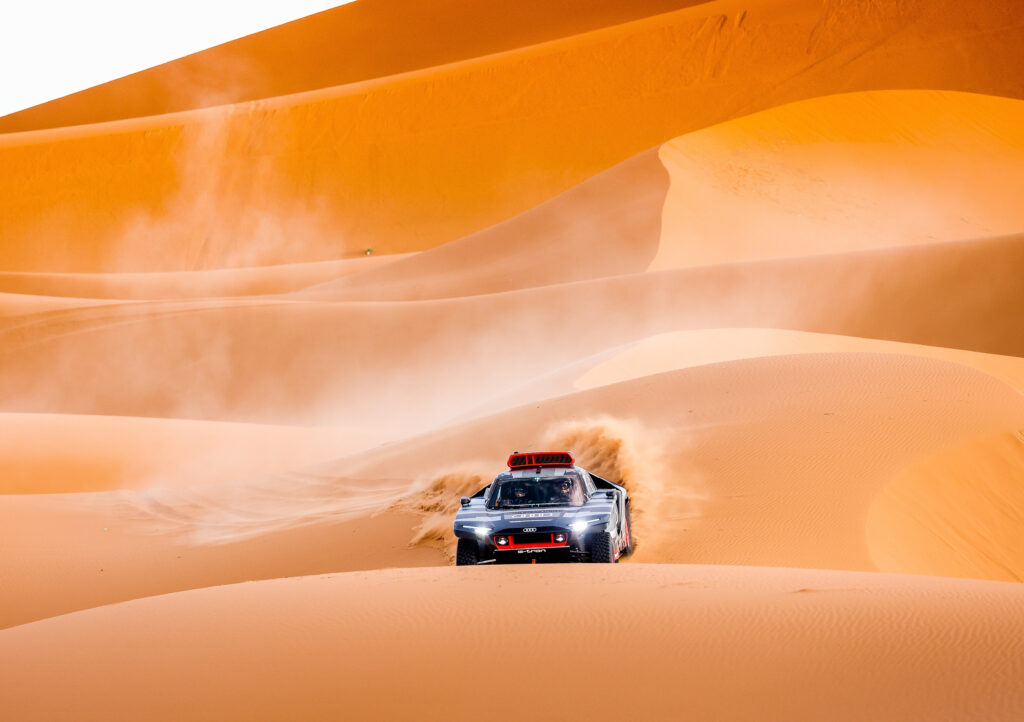
For the efficient range-extending TFSI petrol engine, cooling provisions include a radiator, with an integral heat exchanger for oil-cooling duties, and an intercooler. These are positioned above the rear axle and each is fed air by a divided cowl on the roof.
“In difficult passages, for example when crossing dunes at slow speeds, this air flow may not be sufficient,” said Fröber. “For this reason, a fan sits behind each of the two radiators, which can extract the warm air if necessary.”
An oil-cooling loop for the power steering and hydraulic jacking system is also fitted, along with an air-conditioning system, and the associated radiator and condenser are both located in the nose of the RS Q e-tron.
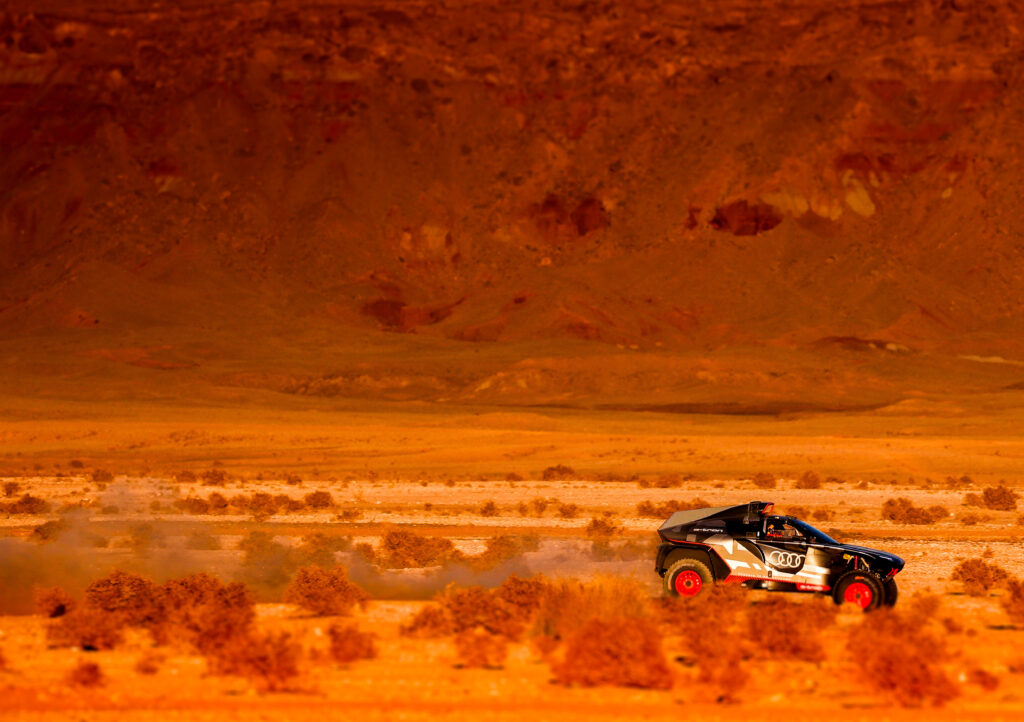
Even in a worst-case scenario, the cooling capacity of the Audi has significant overhead, ensuring performance, durability and reliability in the worst of conditions.
“Carlos Sainz traversed the soft sand of a dried-up riverbed with deliberately taped cooling air intakes in a lengthy test,” said Fröber. “All systems worked flawlessly.”
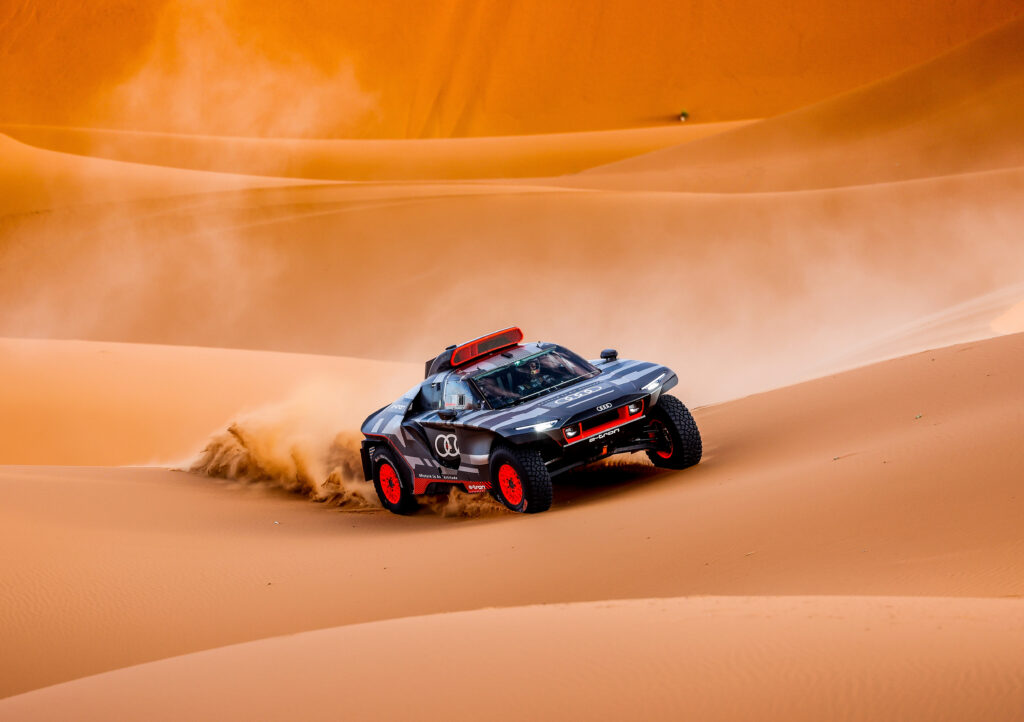
- CategoriesIn SightGlass
- Tagssightglass news issue 26

